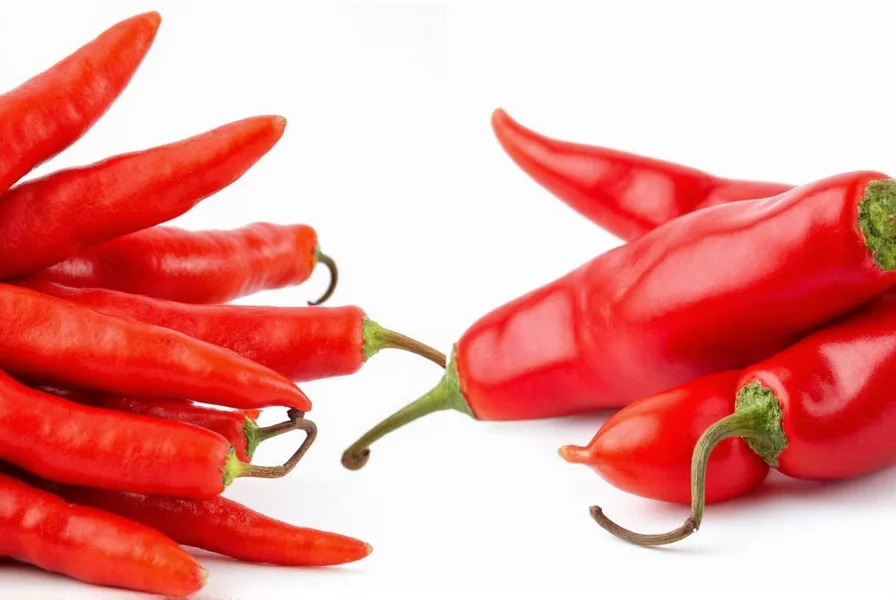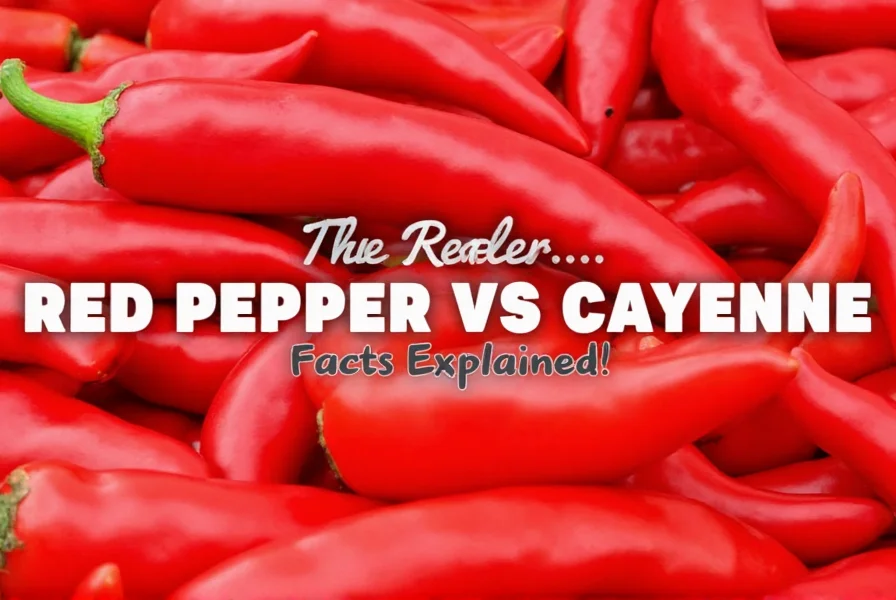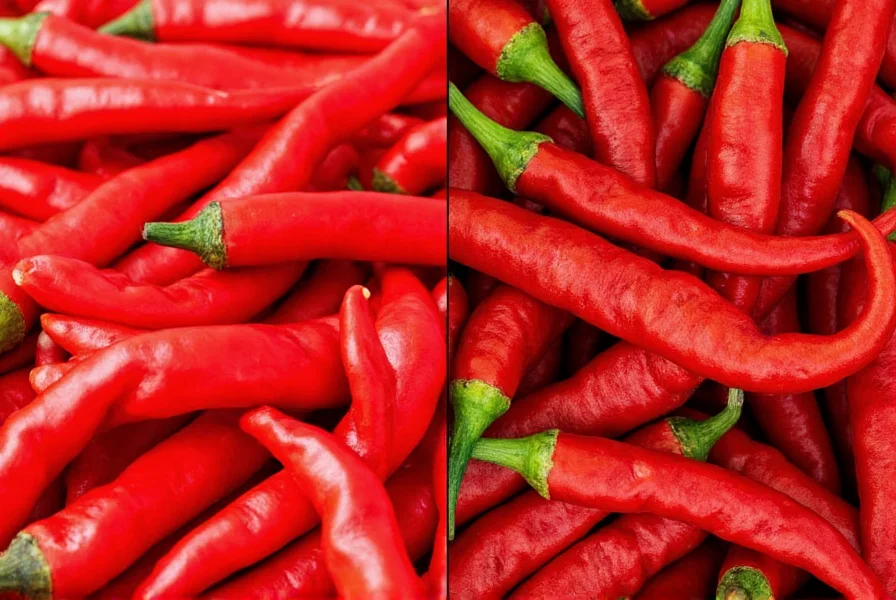When exploring the world of spices, few questions cause as much confusion as whether red pepper and cayenne are interchangeable. This common culinary query stems from overlapping terminology and inconsistent labeling practices across regions and manufacturers. Let's clarify this spice dilemma with precise botanical and culinary distinctions.
Understanding the Terminology Confusion
The term “red pepper” creates significant ambiguity in cooking contexts. In American grocery stores, “red pepper” typically refers to crushed red pepper — a blend of various dried chili peppers including cayenne, but often containing milder varieties like bell peppers and jalapeños. Meanwhile, cayenne pepper specifically denotes a fine powder made from dried cayenne peppers, known for their consistent heat level and distinctive flavor profile.
This terminology confusion explains why many home cooks wonder is cayenne pepper the same as red pepper when following recipes. The answer requires understanding regional naming conventions and spice blend compositions.
Botanical and Culinary Differences
Cayenne pepper comes exclusively from Capsicum annuum cultivars specifically bred for heat, typically measuring 30,000–50,000 Scoville Heat Units (SHU). True cayenne provides a clean, sharp heat with subtle fruity notes.
Conversely, what's labeled as “red pepper” in the United States usually contains a mixture of chili varieties. This crushed red pepper blend often includes:
- Cayenne peppers (providing heat)
- Serrano peppers (adding complexity)
- Other regional chili varieties (contributing varying heat levels)
| Characteristic | Cayenne Pepper | Crushed Red Pepper |
|---|---|---|
| Primary Source | Specific Capsicum annuum cultivars | Mixture of various dried chili peppers |
| Heat Level (SHU) | 30,000–50,000 (consistent) | 5,000–30,000 (variable) |
| Texture | Fine, uniform powder | Coarse flakes with visible seeds |
| Flavor Profile | Sharp, clean heat with fruity notes | Complex, earthy with variable heat |
Practical Cooking Implications
Understanding the difference between red pepper and cayenne becomes critical when following recipes. If a recipe calls for “red pepper flakes,” using pure cayenne powder will likely create an unexpectedly spicy dish. Conversely, substituting crushed red pepper for cayenne in recipes requiring precise heat measurement can yield inconsistent results.
For those wondering can I substitute cayenne for red pepper, the answer depends on your heat tolerance and recipe requirements:
- When substituting cayenne for crushed red pepper: use 1/4 to 1/2 teaspoon cayenne for every 1 teaspoon of red pepper flakes
- When substituting crushed red pepper for cayenne: use 2–4 times the amount of flakes for equivalent heat
Chefs often recommend tasting as you go when making substitutions, as heat levels can vary significantly between brands and batches.

Regional Terminology Variations
The confusion around what is the difference between cayenne and red pepper intensifies when considering international terminology. In the United Kingdom and Australia, “red pepper” often refers specifically to cayenne pepper, while in the United States it typically means crushed red pepper flakes.
This regional discrepancy explains why many international recipes create confusion for home cooks. Always check the recipe's country of origin when encountering ambiguous spice references.
Identifying Authentic Products
To avoid substitution errors, carefully read product labels:
- True cayenne will list “cayenne pepper” as the sole ingredient
- Crushed red pepper typically contains multiple chili varieties
- Premium products may specify the Scoville rating or pepper varieties used
When shopping for cayenne pepper substitute options, consider:
- Hot paprika (milder alternative)
- Crushed red pepper flakes (use more for equivalent heat)
- Chipotle powder (adds smoky dimension)

Practical Application Guide
Understanding whether red pepper flakes vs cayenne is appropriate for your dish depends on the culinary application:
- Use cayenne when you need consistent, intense heat without texture (sauces, marinades, spice rubs)
- Use crushed red pepper when you want visible spice elements and more complex flavor (pizza, pasta, roasted vegetables)
- Never substitute 1:1 — always adjust quantities based on heat requirements
Professional chefs recommend keeping both spices in your pantry for maximum culinary flexibility. Having both allows you to control both heat intensity and textural elements in your cooking.
Frequently Asked Questions
Can I use red pepper flakes instead of cayenne in recipes?
Yes, but use 2-4 times the amount of red pepper flakes to match cayenne's heat level. Crushed red pepper provides more complex flavor but less intense heat than pure cayenne powder.
Why does my recipe call for red pepper when I think it means cayenne?
This confusion stems from regional terminology differences. In many countries outside the US, “red pepper” refers specifically to cayenne. Always check the recipe's origin and consider the required heat level when interpreting spice calls.
What's the heat difference between cayenne and red pepper?
Cayenne typically measures 30,000-50,000 Scoville units, while crushed red pepper ranges from 5,000-30,000 units depending on the blend. This means cayenne generally provides 2-10 times more heat than an equivalent amount of red pepper flakes.
Can I make my own cayenne substitute?
Yes, blend 1 part cayenne with 3 parts paprika for a milder substitute, or use 2 parts crushed red pepper flakes with 1 part paprika for a texture-matching alternative. Always adjust quantities based on your heat tolerance and recipe requirements.
Does cayenne have health benefits different from red pepper?
Both contain capsaicin, but cayenne typically has higher concentrations due to its specific cultivar. This means cayenne may offer more pronounced metabolic and pain-relief benefits, though both contribute similar nutritional profiles including vitamins A and C.











 浙公网安备
33010002000092号
浙公网安备
33010002000092号 浙B2-20120091-4
浙B2-20120091-4